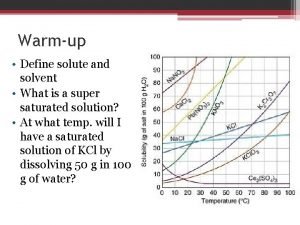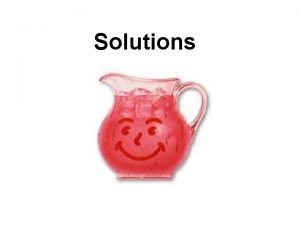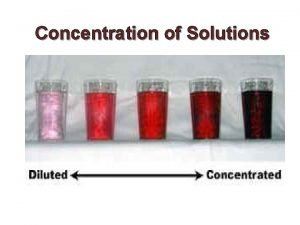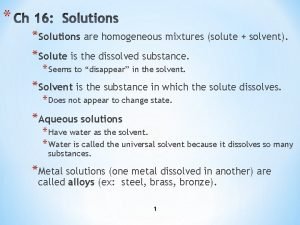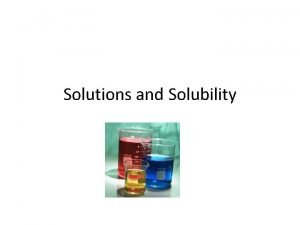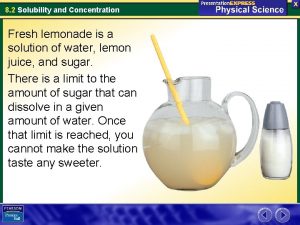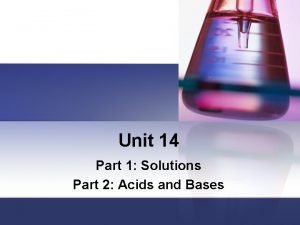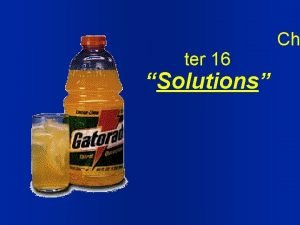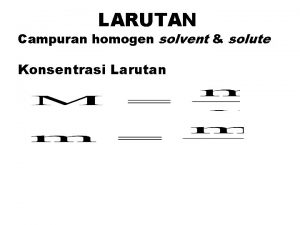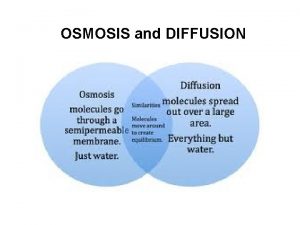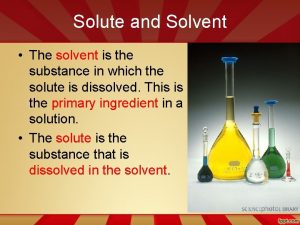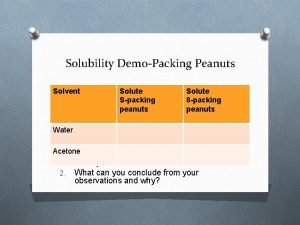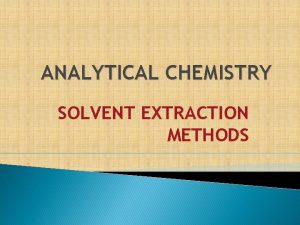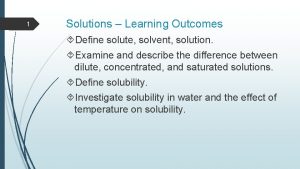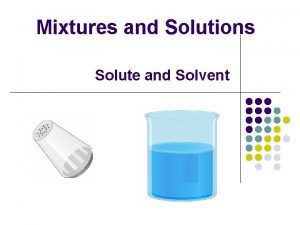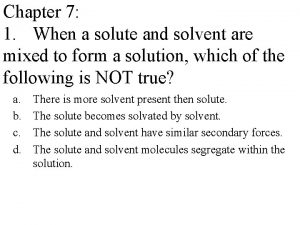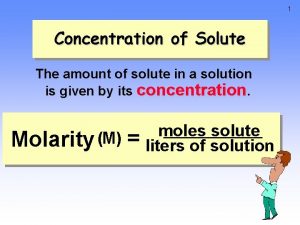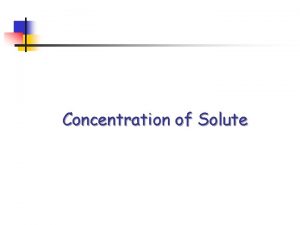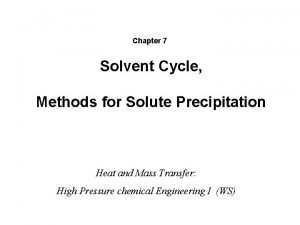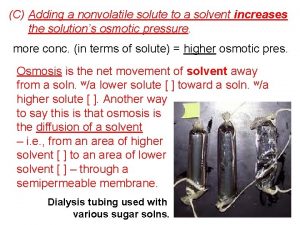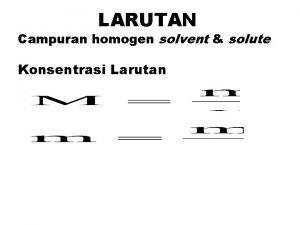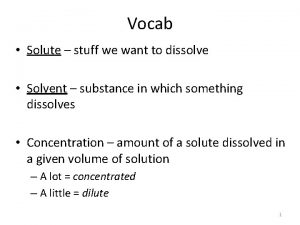Warmup Define solute and solvent What is a



























- Slides: 27

Warm-up • Define solute and solvent • What is a super saturated solution? • At what temp. will I have a saturated solution of KCl by dissolving 50 g in 100 g of water?

Molarity Solutions, Day 2

Types of solutions • Unsaturated- can hold more solute • Saturated- is full of solute • Supersaturated- holds more solute than it should • The type of solution can be determined by solubility curves.

Solubility Curves

Example • How many grams of KCl can dissolve in 100 g of water at 70°C? • About 48 g

Example • What type of solution exists when I dissolve 50 grams of KNO 3 in 100 g of water at 80°C? • Unsaturated

Example • At what temperature will I have a saturated solution of Na. Cl by dissolving 40 g in 100 g of water? • 90 °C

Concentration • Parts of a Solution ▫ Solute: substance dissolved in a solution ▫ Solvent: substance doing the dissolving • Concentration: how much solute is dissolved in the solution ▫ Dilute (weak): small amount dissolved ▫ Concentrated (strong): large amount dissolved

Molarity • moles of solute/liters of solution ▫ Often in grams, need to change to moles �Don’t forget the mole hill!!! ▫ Often in m. L, need to change to liters �kh. Dbdcm

Example • A sample of Na. NO 3 weighing 0. 38 g is placed in a 50. 0 m. L flask. The flask is then filled with water to the mark on the neck, dissolving the solid. What is the molarity of the resulting solution?

Example • An experiment calls for the addition to a reaction vessel of 0. 184 g of Na. OH in aqueous solution. How many milliliters of 0. 150 M Na. OH should be added?

Example • What is the molarity of a solution that contains 4. 5 moles of sucrose in 750 m. L of water?

Example • Calculate the molarity of a solution prepared by dissolving 4. 56 grams Na. OH into enough water to make a 56. 78 m. L solution.

Example • What is the molarity of a bleach containing 9. 5 grams of Na. OCl per liter of bleach?

Example • How many grams of Ca. Cl 2 would be dissolved in 0. 75 L of water to make a 1. 5 M solution?

Example • How many grams of Na. OH do I need to make 250 m. L of a 3. 0 M solution

Solutions • Many solutions are not the desired molarity, so they must be diluted • Remember from yesterday: The more dilute a solution is, the weaker it is. • This is because there is more solvent added and the solution has a smaller molarity

Dilutions • This can be calculated by the formula M 1 V 1 = M 2 V 2 - M is molarity! - V is volume and can be in any unit, as long as V 1 and V 2 are in the same.

Example • What volume of 12 M hydrochloric acid is needed to make 15 m. L of a 4. 5 M solution?

Example • If I add water to 90 m. L of a 0. 15 M Na. OH solution until the final volume is 130 m. L, what will the molarity of the diluted solution be?

Example • How much 5 M HCl solution can be made by diluting 350 m. L of 7 M HCl?

One Step Further • Note that V 2 is the TOTAL volume. • What if I asked how much water is added?

Example • How much water must be added to make a 5 M HCl solution from 350 m. L of 7 M HCl?

Example • What is the new molarity when 15 liters of water are added to 10 liters of 7 M sodium hydroxide?

Example • How much water must be added to make a 9 M Na. OH solution from 500 m. L of 12 M Na. OH?

1)More How. Practice many grams of potassium carbonate are needed to make 200 m. L of a 2. 5 M solution? 2) How many liters of 4 M solution can be made using 100 grams of lithium bromide? 3) What is the concentration of a 450 m. L solution that contains 200 grams of iron (II) chloride?

4)More How. Practice many grams of ammonium sulfate are needed to make a 0. 25 M solution at a concentration of 6 M? 5) What is the concentration of a solution that has a volume of 2. 5 L and contains 660 grams of calcium phosphate? 6) How many grams of copper (II) fluoride are needed to make 6. 7 liters of a 1. 2 M solution?
 Define solute and solvent
Define solute and solvent Solvent vs solute
Solvent vs solute Quizlet
Quizlet Grade 7 science solutions
Grade 7 science solutions Washing soda formula
Washing soda formula Solute of rubbing alcohol
Solute of rubbing alcohol Homogeneous mixture of a solute in a solvent
Homogeneous mixture of a solute in a solvent Sweet tea solute and solvent
Sweet tea solute and solvent Chapter 1 matter and change worksheet answers
Chapter 1 matter and change worksheet answers C2h6o
C2h6o Is carbon dioxide in lemonade a suspension
Is carbon dioxide in lemonade a suspension Solute and solvent in vinegar
Solute and solvent in vinegar Solute vs solvent
Solute vs solvent Polar mixture
Polar mixture Solute vs solvent
Solute vs solvent Solute vs solvent
Solute vs solvent A measure of the amount of solute dissolved in a solvent
A measure of the amount of solute dissolved in a solvent Contoh homogen
Contoh homogen How is the solute being dissolved in the given solvent
How is the solute being dissolved in the given solvent Solute solvent
Solute solvent Define:warmup
Define:warmup Warmup ratio
Warmup ratio Warmup 65
Warmup 65 Gmass warmup
Gmass warmup Status vs class
Status vs class Surface area warm up
Surface area warm up Mind rhyming words
Mind rhyming words Multiplying exponents with same base
Multiplying exponents with same base
